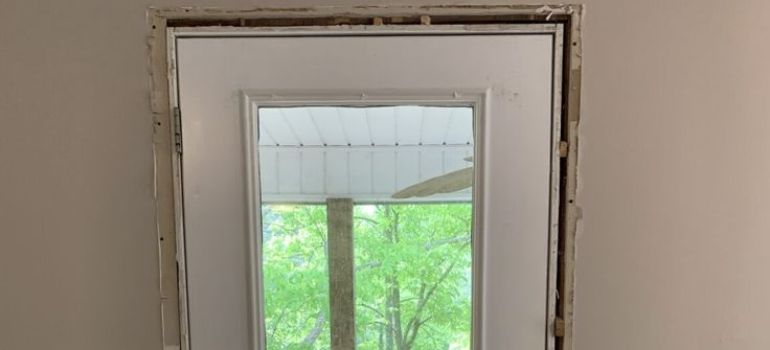Fiberglass doors offer durability, versatility, and aesthetic appeal to any home. However, there are instances where adjustments are necessary, such as during installation or remodeling projects. One common question that arises is, “How much can you cut off a fiberglass door?” Let’s delve into this topic to understand the process, limitations, and considerations involved.
Introduction to Fiberglass Doors
Fiberglass doors are made from reinforced plastic, providing exceptional strength and resistance to various environmental factors like moisture, heat, and scratches. These doors are popular due to their low maintenance requirements and ability to mimic the appearance of wood.
Understanding Fiberglass Door Construction
Layers of Fiberglass
Fiberglass doors typically consist of multiple layers, including an outer fiberglass shell, a core material (usually foam or wood), and an inner fiberglass layer. Each layer contributes to the door’s strength and insulation properties.
Core Material
The core material plays a crucial role in determining the door’s weight, insulation, and overall performance. Foam cores are lightweight and offer excellent insulation, while wood cores provide added strength and stability.
Factors Affecting Cutting Fiberglass Doors
When considering cutting a fiberglass door, several factors need to be taken into account to ensure a successful outcome.
Manufacturer Guidelines
It’s essential to review the manufacturer’s guidelines and warranty specifications before attempting to modify a fiberglass door. Deviating from these recommendations could void the warranty or compromise the door’s structural integrity.
Door Structure
The design and construction of the door will influence how much can be trimmed off safely. Solid-core fiberglass doors may allow for more extensive trimming compared to those with foam cores.
How Much Can You Cut Off a Fiberglass Door?
Determining the allowable amount to trim off a fiberglass door depends on various factors, including the door’s design, manufacturer specifications, and intended modifications.
Determining Allowable Trim Amount
Referencing the manufacturer’s guidelines is the first step in determining how much of the door can be safely trimmed. Typically, manufacturers provide recommendations regarding the maximum allowable trim on each edge of the door.
Tools Required
To trim a fiberglass door, you’ll need appropriate tools such as a circular saw equipped with a fine-tooth carbide blade, measuring tape, pencil, and masking tape.
Steps to Cut Off a Fiberglass Door

Measurement
Accurate measurement is crucial to ensure precise cuts and proper fitment. Measure the desired length or width to be trimmed, marking the cut line with a pencil and masking tape.
Marking
Use a straight edge or level to create a straight line along the marked cut line. This ensures a clean and accurate cut.
Cutting
Carefully cut along the marked line using a circular saw, ensuring steady and controlled movements. It’s essential to wear safety goggles and gloves during this process to prevent injury.
Safety Precautions
Protective Gear
Wear appropriate safety gear, including safety goggles, gloves, and hearing protection, to prevent injuries from flying debris and loud noises.
Proper Handling of Tools
Follow the manufacturer’s instructions for operating power tools safely. Ensure the saw blade is sharp and securely attached before use.
Common Mistakes to Avoid
Incorrect Measurements
Failing to measure accurately can result in uneven cuts or misalignment, affecting the door’s appearance and functionality.
Using Wrong Tools
Using improper tools or techniques can damage the fiberglass surface or compromise the door’s structural integrity.
Benefits of Cutting Off a Fiberglass Door
Customization
Trimming a fiberglass door allows for customization to fit non-standard door openings or accommodate specific design preferences.
Fitting Adjustments
Cutting off excess material can help ensure a snug and precise fit during installation, reducing gaps and drafts.
Professional Assistance vs. DIY
Cost Comparison
Hiring a professional to trim a fiberglass door may incur additional costs but ensures precision and adherence to manufacturer guidelines. DIY trimming can be cost-effective but requires careful attention to detail and safety precautions.
Skill Requirement
Trimming a fiberglass door requires a certain level of skill and expertise, particularly when using power tools. Beginners may benefit from professional assistance to avoid costly mistakes.
Maintaining the Integrity of the Door
- Sealing Edges: After trimming, the exposed edges of the fiberglass door need to be sealed properly. Use a high-quality sealant recommended for fiberglass surfaces to prevent moisture infiltration, which can lead to warping, rot, or other damage over time. Apply the sealant evenly along the edges and allow it to dry completely before further handling or installation.
- Refinishing: Depending on the extent of the trimming and any damage to the door’s surface during the cutting process, refinishing may be necessary to restore its appearance and protect it from the elements. Choose a suitable paint or finish specifically designed for fiberglass doors and follow the manufacturer’s instructions for application. Sand any rough edges or imperfections before refinishing to ensure a smooth and professional-looking result.
- Regular Maintenance: Once the door is installed, it’s essential to maintain it properly to prolong its lifespan and performance. Regularly inspect the door for signs of wear, damage, or deterioration, especially around the edges and corners. Clean the door regularly with mild soap and water to remove dirt, grime, and other contaminants that can degrade the surface over time. Avoid using harsh chemicals or abrasive cleaners that could damage the fiberglass material.
- Adjustments: If the door doesn’t fit snugly or operates smoothly after trimming, adjustments may be necessary. Check the alignment of the door within the frame and make any necessary tweaks to ensure proper sealing and operation. This may involve adjusting the hinges, strike plate, or weatherstripping to achieve the desired fit and functionality.
- Professional Inspection: If you’re unsure about the condition of the door or encounter any issues during installation or use, consider consulting a professional for inspection and assistance. A qualified technician can assess the door’s condition, identify any potential problems, and recommend appropriate solutions to address them effectively.
Conclusion
Trimming a fiberglass door can be a practical solution for achieving a perfect fit and customizing the door to suit specific requirements. However, it’s crucial to adhere to manufacturer guidelines, use proper tools and techniques, and prioritize safety throughout the process. Whether opting for professional assistance or DIY, careful planning and execution are key to ensuring a successful outcome.
FAQs
Yes, you can trim both the length and width of a fiberglass door, following the manufacturer’s guidelines and recommendations.
Exceeding the recommended trim allowance can compromise the door’s structural integrity and may void the warranty.
It’s recommended to use a fine-tooth carbide blade specifically designed for cutting fiberglass to ensure clean and precise cuts.
While professional assistance ensures precision and adherence to guidelines, DIY trimming is possible with proper tools, skills, and safety precautions.
Refinishing frequency depends on factors such as exposure to weather elements and wear and tear. Inspect the door periodically and refinish as needed to maintain its appearance and protection.



